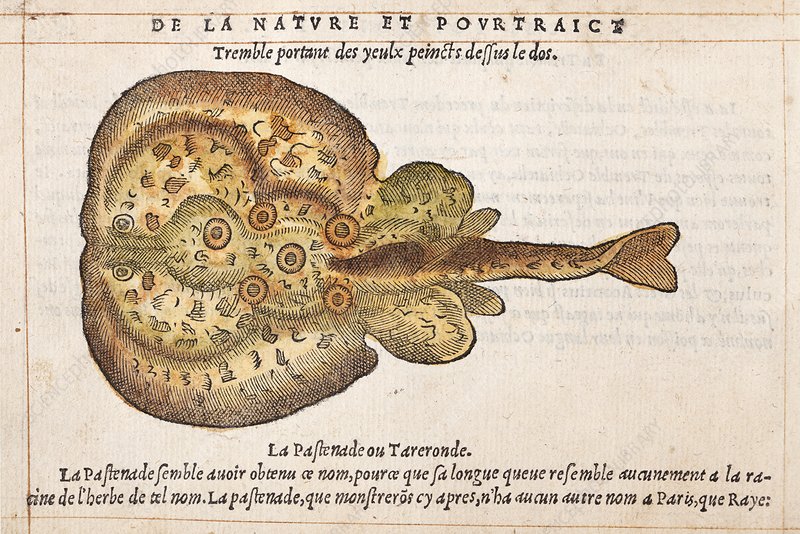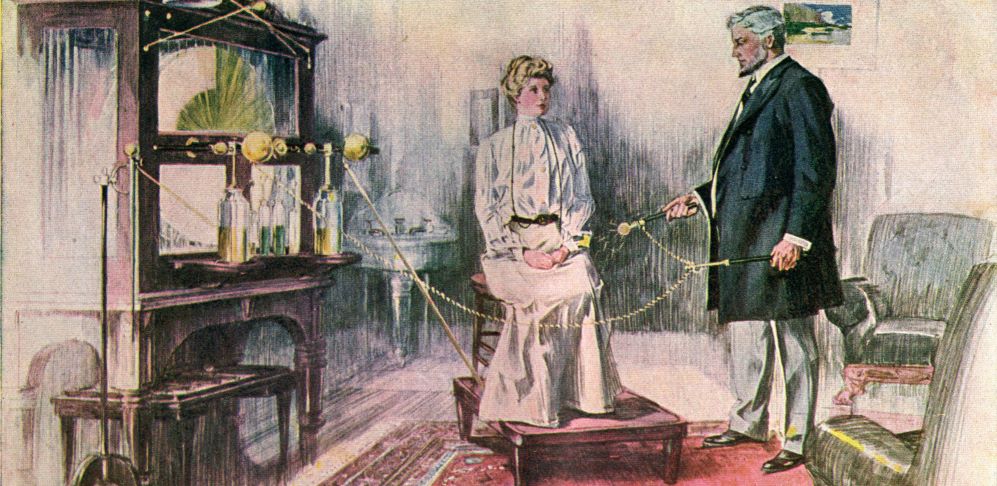Can a rabbit’s foot bring you good luck? Is it possible to use dousing rods to find water? Can tarot cards predict your future? Will a tin-foil hat protect you from people wanting to control your mind? Is a Ouija board the best way to communicate with a person who just happens to be dead?
Today there are many questionable notions about how our natural world works, and how it doesn’t, how humans affect it, and how we don’t, with electricity being no exception. People have been getting electricity completely wrong since forever. It has only been recently that we began to unlock nature’s most basic and fundamental secrets.

In 1600, William Gilbert, court physician to Queen Elizabeth, published De Magnete (On Loadstone), the first book to use scientific method, and systematically put Mother Nature to the test.
Gilbert’s experiments were primarily with magnetism, yet he devoted an entire chapter to another, often complimentary, invisible force: ‘electricity’, a term he coined, derived from “elecktron”, the Greek word for amber. His experiments were detailed and reproducible; his results often surprising.
Soon, other natural philosophers were performing and publishing their own experiments with electricity. These first discoveries were both simple and magnificent. Pieter van Musschenbroek, captured lightning in a Leyden jar (1745), Benjamin Franklin controlled a bolt of lightning with a crown of metal points (1752), and Alessandro Volta created electricity that flowed continuously (1800).
“That was the game changer,” says John Jenkins, Museum president & CEO. “Having a consistent flow of current helped launch a whole new world of electrically powered devices and machines.”
By 1900, the practical applications of electrify seemed to be limitless. Telephone and telegraph lines were crisscrossing the nation from coast to coast. Rivers of electrical energy began to flow to an ever increasing number of homes and businesses all across the country.
Light, heat, power, anything and everything seemed possible with our new invisible friend—including, for better or for worse, ‘electro-therapy’.

“The most amazing development of electricity as applied to the human system. The story of startling results secured in almost every known ailment to which flesh is heir. Now available for use in every home.” Bleadon-Dun Company, Chicago 1919
Most people don’t realize that electricity was already a widely accepted form of medical treatment as early as the 1880s. Scores of fascinating electro-medical devices of all kinds (many on display) were marketed to the general public as a cure-all for, well, everything.
The idea that electricity could be curative and healthful goes back to the 1st century AD, when Scribonius Largus, (c. 1-c. 50) court physician to the Roman emperor Claudius, first applied an electric torpedo fish to his patients as therapy for a variety of ailments, including headaches, depression, nervous disorders, gout, and even hemorrhoids.
Imagine, a live electric fish applied to you, the patient, for your headache, depression, nervous disorder, gout and hemorrhoids. Not to belabor the point, but how & where would you apply a live torpedo fish to directly treat hemorrhoids?
“If you feel it, then it’s working.” – Groucho Marx
It must have worked as well as any other placebo, and soon other medical practitioners began mirroring his methodology and treating their patients with electric currents from live electric fish.
For centuries these shockingly outrageous remedies were applied without ever confirming their worth as effective treatments, and we’ve been using this form of quack medicine in one form or another ever since.
Modern Medicine, 1890s (keep the spark, lose the fish)

The Museum currently displays a variety of early electrical apparatus that were created and sold as a tonic for ailments of all sorts. Everything from a relatively harmless Electro-Magnetic hairbrush (1870s), to a dangerously radioactive, yet portable X-ray fluoroscope (1920)—all used electricity and magnetism to make often shameless health claims, listing cures to every known illness imaginable.
“Men, why are you weak? If you suffer from nervous debility, seminal weakness, impotency, lost manhood, rheumatism, troubles, sleeplessness, poor memory, general ill health?” 1892
One of the most popular consumer medical products ever placed on the market was the Pulvermacher Galvano Company’s wildly popular electro-therapy belt, created in1880.
It was essentially a chain battery worn around the waist, with a special sac that attaches to the male genitals, claiming to cure impotence and erectile dysfunction. Pulvermacher promoted a theory that loss of “male vigour” in later life could be reversed with this electro-therapy treatment.

“Guaranteed to cure almost all known diseases and illnesses including exhaustion, impotence, liver disease, nervous disorders, heart disease, hernias, and unsatisfactory sexual performance.”
Sears Roebuck sold tens of thousands of these belts in their catalog to customers for as little as $14. Pulvermacher offered men all across the country added strength and virility though the power of you know what, you know where.
But the question is, were they effective?
“They worked at least as well as a torpedo fish,” states Jenkins, a curator with a great deal of experience. “It feels better once you stop, but that’s about it.”
Electric belts were a big seller in the United States between1890 and 1920, when demand ultimately shriveled, and sales finally petered-out.
Electricity is Life!
You, too can experience the miraculous, medicinal effects of electro-therapy, every time you enter the SPARK Museum’s main lobby. For just 25 cents you and your loved-ones can: ‘Regain and maintain perfect health!
“This electro-therapy device is guaranteed to give you all the medicine you can handle,” says Jenkins. “Everybody feels more alive after finishing with a round of this treatment.”
Stay grounded.
